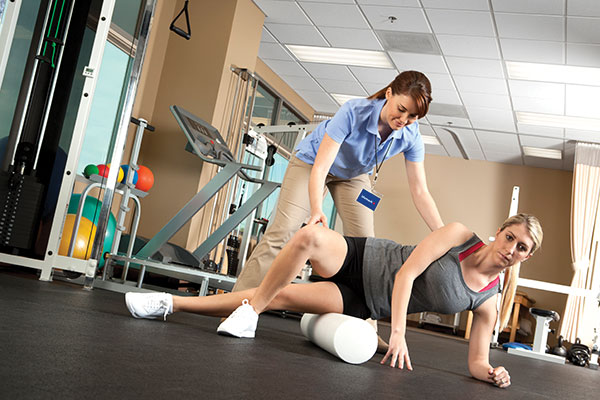
If you’ve set foot into a gym or physio clinic in the last 10 years, then you’ve almost certainly witnessed, or felt first hand, the agony that is foam rolling. Foam rolling, or Self Myofascial Release, is a popular technique that theoretically ‘releases’ tight muscles and mobilizes the network of connective tissues known as fascia. Fascia is a relatively new concept and its definition is still being debated in the scientific community. It was previously thought to be a simple covering or divider for the muscles and organs, but more recent research is suggesting that it may have more significant roles in force and tension transmission throughout the body. However, fascial research is still in its infancy so anything you read about it should be taken with a grain of salt. Furthermore, good quality experimental studies of foam rolling have only begun to emerge.
How does it work?
In short, we don’t really know for sure. The literature looking at the mechanisms of foam rolling is full of words like: ‘may’, ‘potentially’, ‘appears’, or ‘uncertain’ and phrases like “more research is needed”. In general, the possible mechanisms are divided into broad categories: mechanical and neurophysiological effects. Mechanical pathways involve concepts such as breaking up fibrous adhesions or mechanically improving blood flow. Neurophysiological pathways involve the stimulation or inhibition of specific receptors within muscle tissues leading to a reduction in excessive muscular tension. But rather than dive into an in depth exploration of technical mechanistic research, I will focus on the beneficial effects of self-myofascial release that have gained some credible support.

How can it help?
Improve flexibility--There is reasonable agreement in the literature that self-myofascial release does increase flexibility and improve range of motion. Most studies found that between 1-2 minutes of rolling or other release technique is sufficient for acute increases in flexibility. Whether rolling contributes to longer term improvements in flexibility is still up for debate, as most studies have been done over short time periods. A 2016 study looked at foam rolling + static stretching vs static stretching alone over a four week period and found that the addition of foam rolling provided no added improvement (Morton et al., 2016).
Athletic performance--Current evidence suggests that foam rolling has no impact on athletic performance. This is actually a good thing for athletes looking for a quick way to loosen up before exercising since static stretching has long been found to have negative effects on athletic performance (specifically in sports demanding lots of strength and power).
Reduced DOMS-- DOMS stands for Delayed Onset Muscle Soreness and refers to that stiff achy pain that makes going down stairs torture for a few days after a heavy squatting session. Foam rolling has been shown to significantly reduce the intensity of DOMS following a training session. Once again this is an acute benefit, so ongoing maintenance is required for relief after each gym session.
The current scientific evidence surrounding foam rolling and other self-myofascial release techniques suggests that it can be a beneficial addition to a training routine to improve flexibility prior to an exercise bout and reduce DOMS afterwards. Furthermore, there is no evidence that these techniques can be harmful (if done properly), so if it feels good, do it! Aside from this, the research clearly indicates that more research is needed.